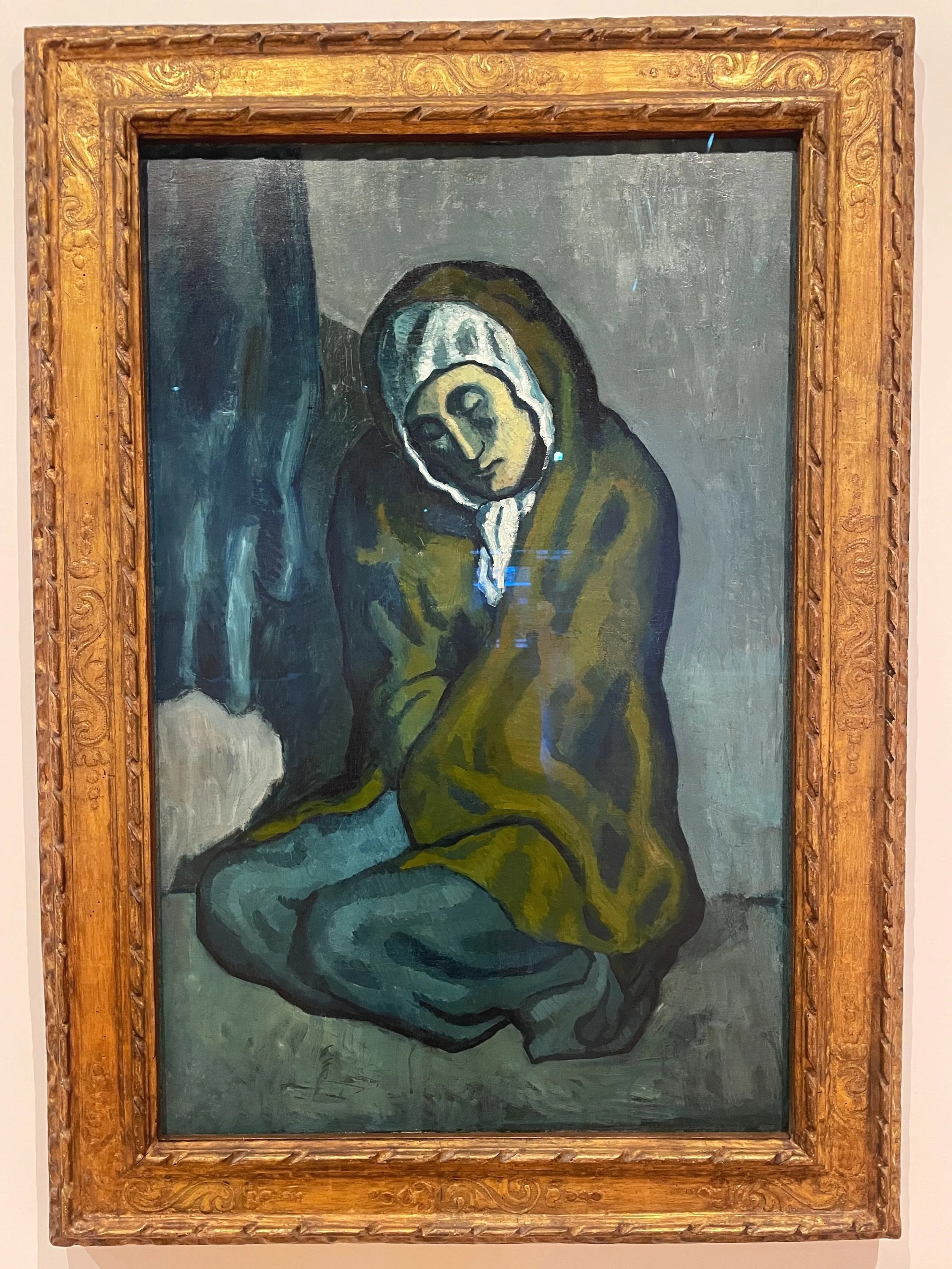The Story of Berthe Weill:
LIVE A LIFE TRUE TO YOURSELF
In light of everything that has transpired over the past few months, I wanted to pay homage to a woman whose story resonates now more than ever—someone I’m grateful NYU’s Grey Museum has rightly brought into focus. Berthe Weill personified resilience in the face of adversity. She believed in her artists, worked relentlessly, and earned her place among the great dealers of French Modernist painting (although she was seldom celebrated as such).
“Make Way for Berthe Weill” was the fitting title of the exhibition—a rich collection of artworks by the artists she championed, a timeline of her life as a Parisian gallerist, and a tribute to her milestones, including her involvement in the Dreyfus Affair. Most poignantly, the show did not shy away from the economic hardship she endured. This choice felt especially powerful. The curators—deserving of praise—acknowledged the complex, layered reality of a woman who pushed modernism forward without ever achieving financial security. Her story reflects not only a historical reality, but mirrors ongoing struggles in the art world today.
Georges Kars, Portrait of B. Weill, Oil on Wood, 1933
Berthe Weill (1865-1951) began her career as her cousin’s apprentice. After his death, she transformed his antique shop into Galerie B. Weill. With the help of her business partner and a few creative collaborators, she launched Place aux Jeunes! (Make Way for the Young)—an exhibition that set the tone for her life’s work. She was a woman of vision, taste, and generosity who consistently made space for emerging talent. She was the first to exhibit works by Picasso and Matisse and mounted the only solo show Modigliani had during his lifetime.
Aristide Maillol, (l-r) Women Wrestlers; Modesty, Terracota, 1900
Despite her groundbreaking curatorial instincts, Weill contended with the ruthless dynamics of the art market. She lost many artists to larger, better-funded galleries. In her memoir, she recounts how, from her first exhibition in 1901, other dealers would attend her openings only to court her artists. Aristide Maillol’s terracotta sculptures, for example, caught the eye of Ambroise Vollard, a leading and renowned Paris dealer. Rather than purchase the works through Weill, he approached Maillol directly and began representing him two years later.
Pablo Picasso, La Miséreuse accroupie (The crouching Beggarwoman), Oil on Canvas, 1902
Picasso, too, got his first break through Weill. She met him shortly after his arrival in Paris, and their early collaborations included “Le Moulin de la Galette” (now in the Guggenheim’s permanent collection) and “La Miséreuse accroupie” (1902), from his Blue Period. The latter was included in the fourth group show she featured him in that year. Yet even with Picasso, her efforts often went unrewarded financially. The exhibition underscores how Weill fought an uphill battle throughout her career.
I hadn’t realized that many of The “Fauves” (The Wild Ones) —Camoin, van Dongen, Marquet, Matisse, and Puy—all passed through her gallery before gaining widespread acclaim. Before they stunned the Salon d’Automne, Weill had already taken a chance on them. The term “Fauvism,” coined by critic Louis Vauxcelles (who also named “Cubism”), reflects their radical use of color and brushwork. Soon after Weill gave them space, they would go on to shape the future of art history. One standout from the show, Maurice de Vlaminck’s Le Cultivateur (The Farmer), was a testament to her foresight.
Émilie Charmy, Autoportrait (Self Portrait), Oil on Canvas, c. 1906
Émilie Charmy, Piana Corsica, Oil on Canvas, 1906
I walked around the exhibition in awe of Weill’s vision, but also with a heavy heart. Her struggles were tangible—yet so was her tenacity. I was especially moved by her relationship with painter Émilie Charmy, a fellow rule-breaker and pioneer. The painting displayed above—a self-portrait featuring Charmy’s bare breast—was radical in 1906. It challenged not only gender norms but also artistic conventions, embracing the fauvist style with confidence. Another of her landscapes stood out for its technical grace, placing her firmly alongside her male contemporaries.
Amadeo Modigliani, Fille Rousse (The Gril with Red Hair), Oil on Canvas, 1915
The last highlight of the show was learning of Weill’s involvement with Amedeo Modigliani’s career. Seen as vulgar and problematic during his life, Modigliani didn’t gain lasting fame until after his death. Berthe Weill was the only gallerist to mount a solo exhibition of his work while he was alive. In 1917, the show included around thirty paintings and drawings—one of which caused such a scandal that the police shut the exhibition down on opening night. The reason? Visible body hair in nude portraits. Paris was scandalized, Weill and her gallery became notorious.
Émilie Charmy, Portrait de Berthe Weill (Portrait of Berthe Weill), Oil on Canvas, 1910-14
Before leaving, I spent time with the section on the Dreyfus Affair, in which Weill famously stood down an angry mob threatening to smash her gallery windows for showing work by Henry de Groux. Her bravery, her convictions, her contributions to art history and culture at a time of such tension—none of it made her wealthy. But it made her unforgettable.
Towards the end of her life, she depended on her artists and peers, just as they started out depending on her. Many of her artists pulled funds for her home’s upkeep and financial stability through to her passing.
As I stepped out, starstruck from the exhibition, I found myself thinking,
‘I must live a life true to myself’.










